In recent years, with the continuous changes in the market, JUTAI is also constantly introducing new products and new product group, in order to provide customers with more satisfactory complete solutions. The following are some of the solutions and product group we are currently hot selling. #Product Groups and Solutions
1. Industrial Door Trigger and Safety Sensor
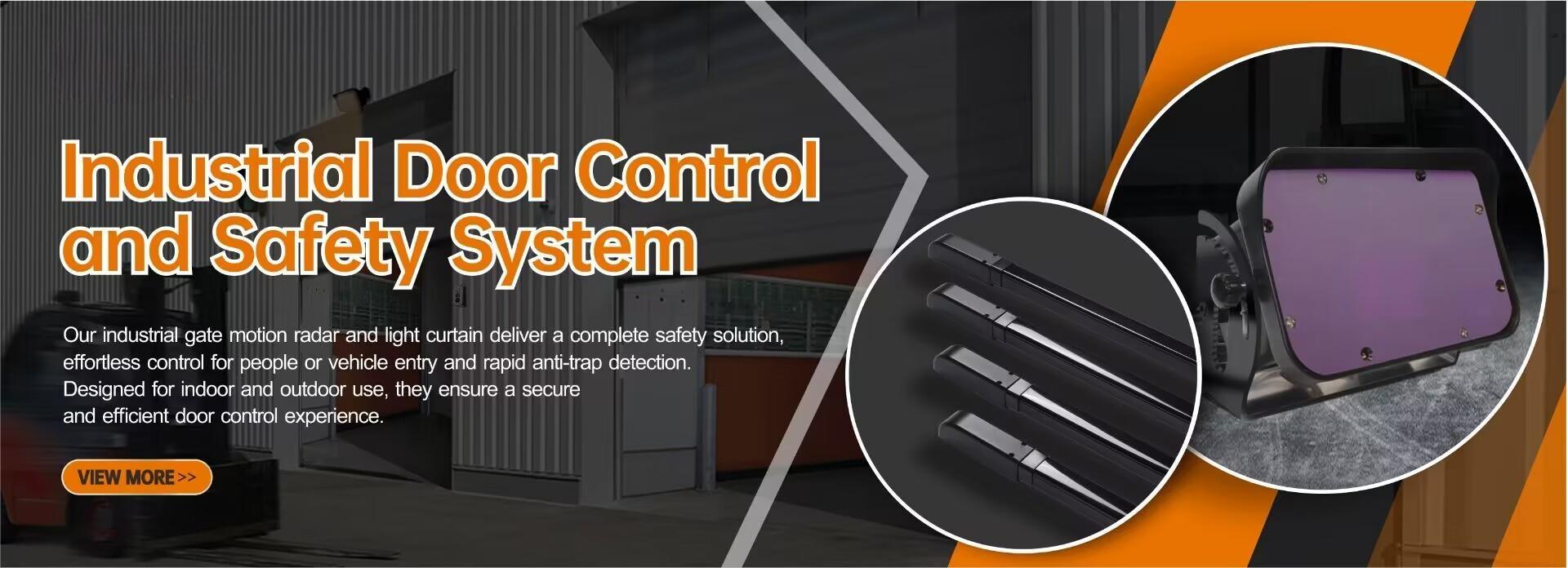
Industrial door is one of the common equipment in the industrial field, in order to improve its safety and intelligence level, often use some advanced sensing technology. Infrared beam sensor and vehicle-person separation radar are two common sensors used in industrial door systems, and they are often used to provide door safety and automatic control.
Principle: The infrared grating system transmits an infrared beam sensor and receives it on the opposite side, and when an object (such as a person or a vehicle) passes, it blocks the beam and triggers the system alarm or performs the corresponding operation.
Application: It is mainly used to detect whether there are obstacles at the door to avoid closing the door when the object passes through, so as to prevent nip accidents.
Principle: Human-vehicle separation radar uses radar technology to accurately identify people and vehicles, and distinguish their direction and speed of movement.
Application: In the industrial door system, it can be used to identify people and vehicles in the doorway area to provide data support for intelligent decision-making.
Industrial doors often use both infrared beam sensor and human-vehicle separation radars to achieve a higher level of safety and automated control. The specific linkage methods are as follows:
Safety control: When the infrared grating detects an object approaching the door, the system receives a signal and begins to further analyze the type of object (person or vehicle) through the vehicle-person separation radar. In the case of a person, the system can sound an alarm or perform appropriate safety procedures, such as slowing down or stopping the movement of the door. In the case of a vehicle, the system can determine whether it needs to wait and open or close the door in advance.
Intelligent gate control: The human-vehicle separation radar can more accurately identify the moving target in the doorway area to avoid misjudgment. Through the linkage with the infrared beam sensor, the system can realize the automatic control of the door to ensure that the door is safely opened and closed when people or vehicles pass through, and improve the intelligent level of the door.
Through such linkage applications, industrial door systems can respond more intelligently to different scenarios and needs, improving safety, efficiency and automation levels.
2. Home Gate Access Control and Security Infrared Sensor
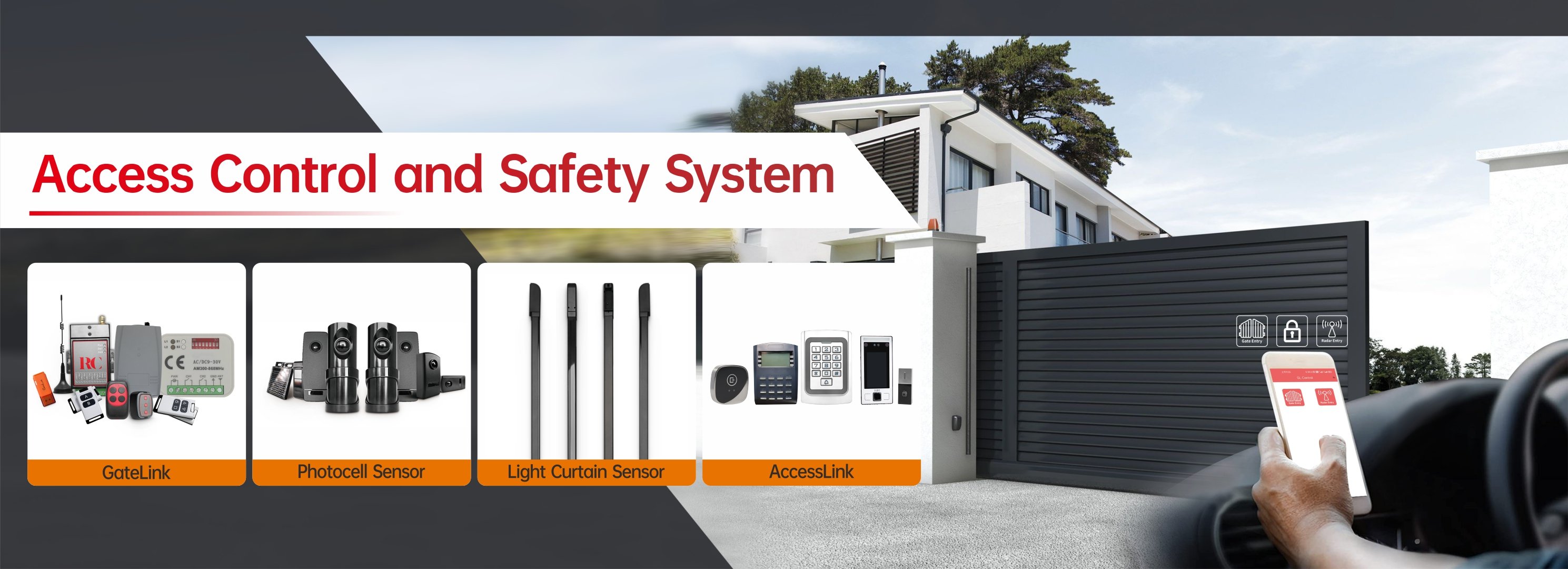
When it comes to the safety and convenience of the home door, products such as Bluetooth remote control modules, infrared beam sensors and access control devices are usually used. Here is a detailed introduction to these three products, and their linkage application in the home door:
The Bluetooth remote control module uses Bluetooth technology to allow users to remotely control the opening and closing of the door through a mobile phone or other Bluetooth device.
Application: Provides user-friendly remote door control function without physical contact, improving the convenience of door use.
Principle: The infrared beam sensor emits an infrared beam and detects whether the beam is blocked to determine whether there is an object approaching.
Application: Mainly used to detect whether there are people or other objects in the doorway area, to provide security protection function.
Principle: The access control machine integrates identity authentication, rights management and other functions, usually equipped with a touch screen or card recognition, used to control the opening and closing of the door.
Application: Provides highly secure access control, which can be authenticated by means of password, swipe card or biometrics.
1.Security control process:
Infrared beam sensor detection: When the infrared beam sensor detects a person or other object at the door, the system response is triggered.
Access appliance authentication: The access appliance authenticates users to ensure that only authorized users can access.
Bluetooth remote control: Through the Bluetooth remote control module, authorized users can remotely open the door to facilitate the entry and exit of family members.
2. Convenient remote control:
Bluetooth remote control: Users can easily remotely control the opening and closing of the door using a mobile phone or other Bluetooth device without having to go near the door.
Real-time monitoring: The infrared beam sensor is used to monitor the doorway area in real time to ensure that anomalies can be detected in time during remote control.
3. Authentication enhances security:
Access control all-in-one authentication: Use the access control all-in-one for efficient authentication to enhance the security of the door.
Two-factor authentication: Combined with Bluetooth remote control and access control, two-factor authentication is realized to improve the security of the door.
Through such a linkage application, the home door system can achieve efficient remote control, secure access control management, and real-time monitoring of the doorway area through infrared beam sensors to ensure the safety and convenient access of family members.
3. Community Security Access Control Solutions
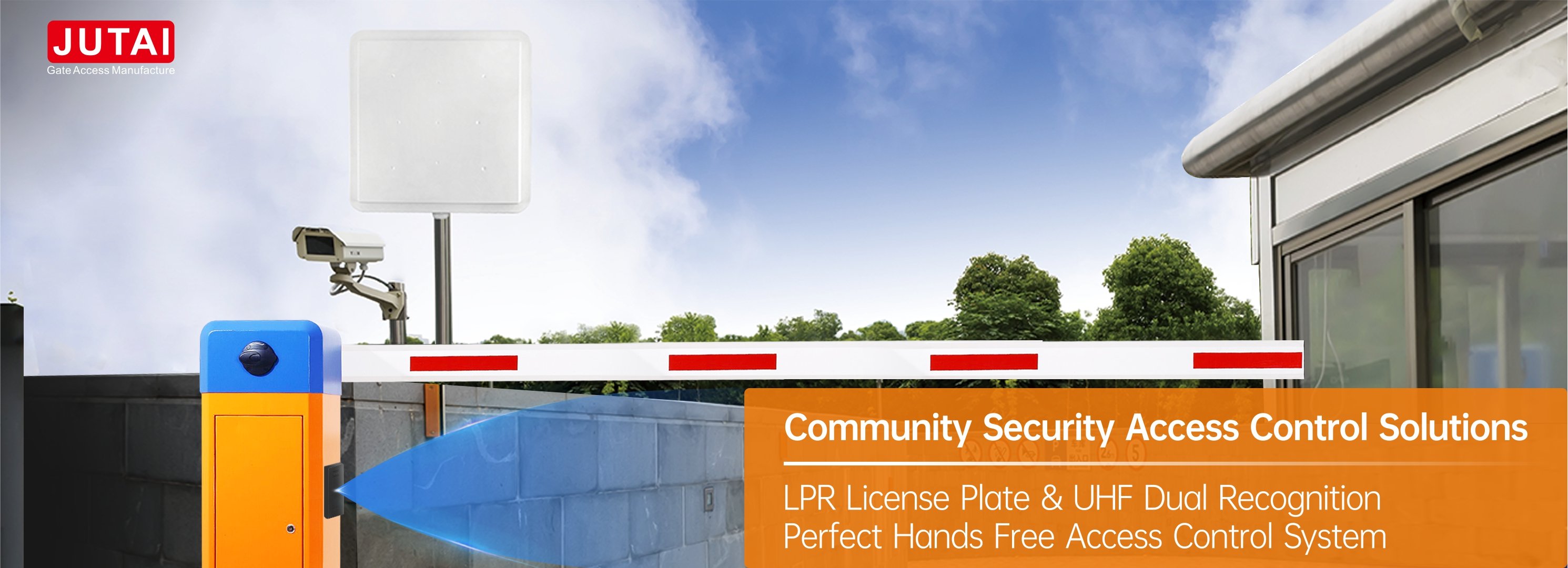
In community access management, one of the product groups we can offer includes gate, gate radar, and UHF long distance encrypted card reader. Here is a detailed introduction to these three products, and their linkage application in the home door:
How it works: A barrier gate is a mechanical device, usually driven by an electric motor, used to control the entry and exit of vehicles or pedestrians. It can be opened and closed manually, remotely or automatically.
Application: For the entrance and exit management of communities, parking lots and other places, to restrict and control the passage of vehicles or pedestrians.
Principle: Barrier radar uses microwave radar technology to sense the approach and distance of vehicles, and triggers the opening or closing of the gate at the right time.
Application: It is mainly used to improve the intelligence of the gate and automatically control the movement of the gate according to the real-time situation.
Principle: UHF long distance encryption card reader uses radio frequency identification (RFID) technology to read card information over long distances, while supporting encryption technology to improve security.
Application: Used for authentication of vehicles or pedestrians, providing efficient entrance and exit management.
1. Authentication and gating:
UHF card reader authentication: The UHF card reader can identify the RFID card on the vehicle for authentication.
Gate control: Through the authentication results, the gate can be automatically opened or closed to achieve effective gate management.
2. Intelligent motion perception:
Barrier radar motion sensing: Barrier radar can sense the movement of vehicles in real time.
Real-time gating: The radar information can be combined with the UHF card reader to achieve real-time control of the door to ensure that it is opened or closed in time when there is a vehicle approaching.
3. Multi-factor authentication:
UHF card reader and gate linkage: Combine the long-distance identification of UHF card reader and the physical control of gate to achieve multi-factor authentication.
Improved security: Linkage applications improve door security, ensuring that only authorized vehicles or pedestrians can enter the neighborhood.
By linking these products, the community's entry and exit management system can more intelligently authenticate and gate, improving security and convenience. The UHF card reader provides an efficient means of identity verification, and the linkage between gate radar and gate makes the whole system more flexible and intelligent control according to the real-time situation.
4. Parking Management System
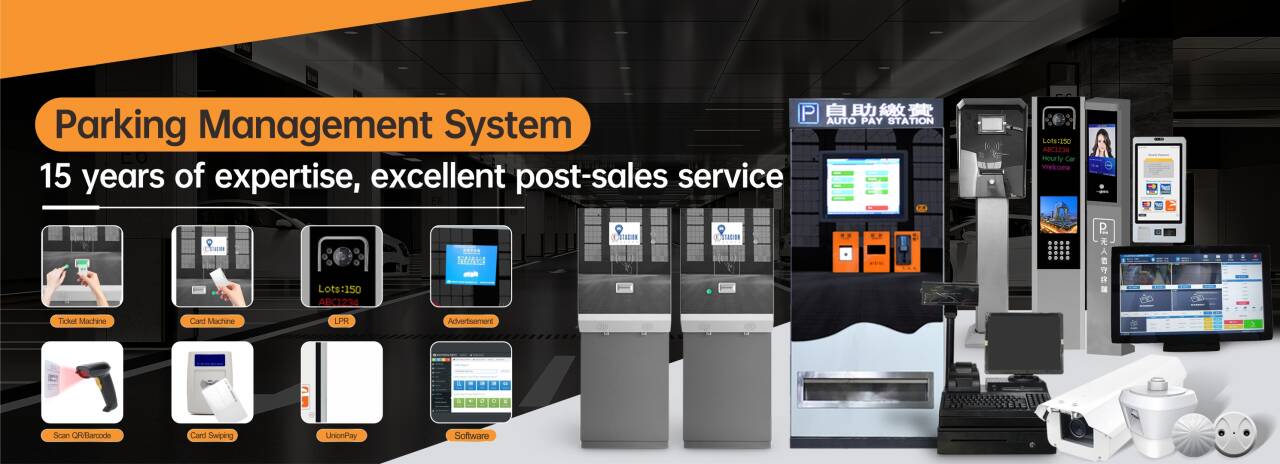
The parking lot Management System is an integrated solution designed to improve the efficiency, safety and user experience of parking lots. The basic principles include:
1. Vehicle entry: When the vehicle enters the parking lot, the system records vehicle information through various devices (such as license plate recognition cameras, QR code scanning guns, etc.).
2. Parking space management: The system monitors the use of parking Spaces in the parking lot in real time, displays information about free parking Spaces, and guides vehicles to quickly find available parking Spaces.
3. Payment and settlement: Through self-service payment machines or other payment devices, users can easily complete the payment and settlement of parking fees.
4. Vehicle departure: When the vehicle is ready to leave the parking lot, the system records the vehicle departure information through the equipment, and the corresponding fee settlement.
1. Ticket collection box:
Function: Used to get parking ticket when the vehicle enters.
Application: In scenarios where orderly parking is required, such as large parking lots, the ticket collection box can be used to generate admission vouchers for subsequent settlement.
2. Card pickup box:
Function: Similar to the ticket box, but usually used to store temporary issued magnetic cards or IC cards.
Application: In some traditional parking lots, the card box is still a common access control method, and the user takes the card when entering the parking lot and swipes the card when leaving.
3. License plate recognition machine:
Function: Automatically recognize license plate information through camera and image recognition technology.
Application: It is used to realize non-perceptual access to the parking lot, improve the efficiency of vehicle traffic, and reduce manual intervention.
4. Self-service payment machine:
Function: Allow the owner to complete the payment and settlement of parking fees.
Application: To provide convenient and fast self-service payment service, reduce the manual queue settlement, improve the overall efficiency of the parking lot.
5. Qr code scanning gun:
Function: Used to scan the parking QR code on the user's mobile phone, complete the payment and admission/departure records.
Application: Support booking and paying parking fees through mobile APP to improve user experience.
6. Paid computers and Software:
Functions: Hardware and software equipment to provide parking cost calculation, management, settlement and other functions.
Application: In the parking lot management room, through the toll computer and related software to monitor and manage parking fees.
7. License plate recognition Camera:
Function: Used to shoot vehicle license plates, and extract and recognize license plate information through license plate recognition algorithm.
Application: Combined with license plate recognition machine, automatic identification and recording of vehicle information, improve import and export efficiency.
1. License plate recognition and self-service payment:
License plate recognition machine recognizes vehicle information.
The self-service payment machine automatically obtains the parking fee through the license plate information, and the owner completes the payment.
2. Qr Code scanning and Payment:
The QR scanner scans the parking QR code on the user's phone.
Users pay for parking through their mobile phones.
3. License plate recognition and parking space Management:
License plate recognition cameras recognize vehicle access information.
The system updates the usage of parking Spaces in the parking lot according to real-time information.
Through such linkage application, the parking lot management system can achieve intelligent management and improve the efficiency, safety and user experience of the parking lot.
5. Sliding Gate Trigger and Safety Sensor
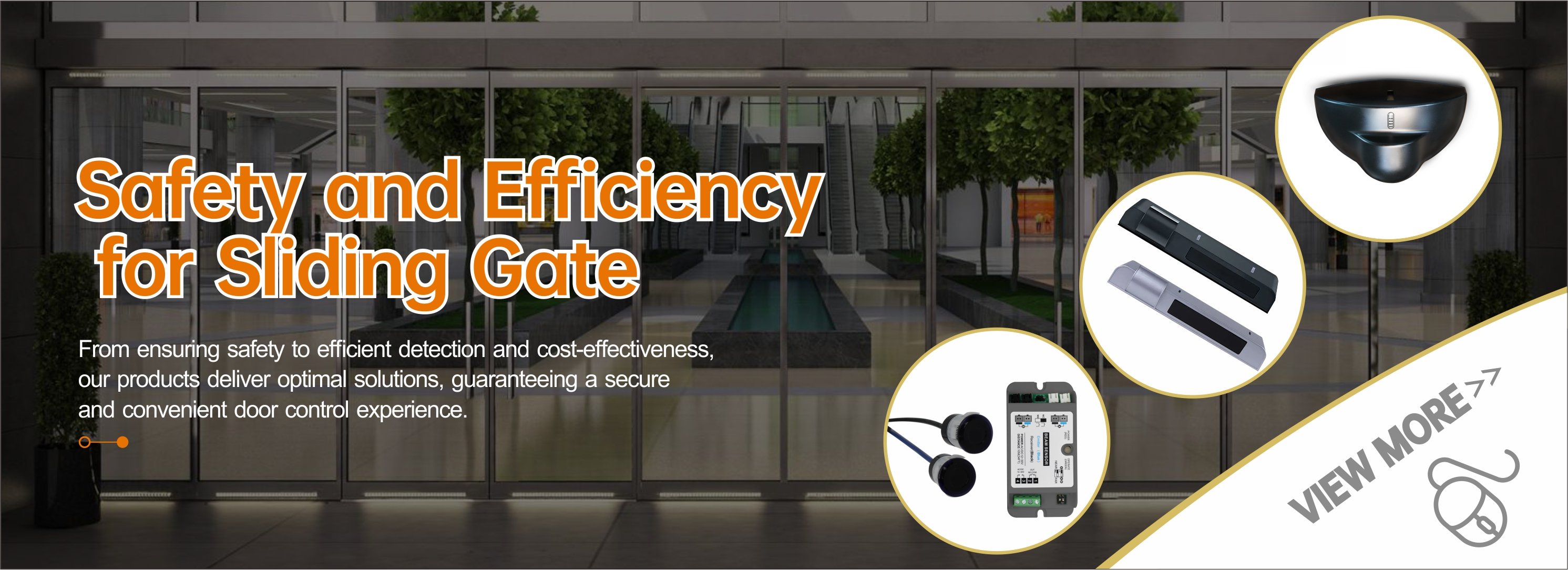
In the automatic system of sliding glass door, the commonly used sensors include infrared eye sensor, radar infrared integrated sensor and microwave radar motion sensor. The following is a detailed introduction to these three sensors and their linkage applications in sliding glass doors:
How it works: The infrared eye sensor emits an infrared beam that triggers a signal when an object blocks the beam.
Application: Mainly used to detect whether there are people or obstacles in the doorway area to trigger the opening or closing of the sliding glass door.
Principle: Radar infrared integrated sensor combines radar and infrared technology, can sense the distance and direction of the object, with higher accuracy.
Application: Used to detect people or objects in the doorway area, provide more accurate trigger signals, and make the sliding glass door switch more intelligent.
Principle: Microwave radar motion sensor transmits microwave signals, and when an object moves, it senses the presence of the object by receiving changes in the microwave signal.
Application: It is mainly used to detect dynamic changes in the doorway area, including the movement of people and vehicles, which can provide reliable detection in a wider range.
1. Safety control:
Infrared eye sensors are used to detect people or obstacles in the doorway area.
Integrated radar infrared sensors provide more accurate range and direction information for increased safety.
Microwave radar motion sensors detect dynamic changes and ensure there are no obstructions when the door is closed.
2. Intelligent switch:
An infrared eye sensor triggers a signal that initiates the opening or closing of the sliding glass door.
The radar infrared integrated sensor provides a smarter switch that dynamically adjusts the behavior of the door based on the distance and direction of the object.
Microwave radar motion sensors detect the movement of doorways over a wider range, ensuring the automatic adaptability of doorways to pedestrians and vehicles.
3. Energy saving mode:
The infrared eye sensor and the radar infrared integrated sensor can trigger the energy saving mode when there is no person in the doorway area to reduce power consumption.
The microwave radar motion sensor can also trigger the energy-saving mode of the door when it detects a long period of silence.
By combining these three sensors in a linked application, sliding glass door systems can achieve a higher level of safety, intelligence and energy saving. These sensors provide information in different aspects, allowing the system to more accurately perceive the condition of the doorway area and provide a smarter and safer service.
#Product Groups and Solutions
Fill out more information, We will get back to you within 24 hours.
5F,Mingjinhai Industrial Park, ShiyanTown, BaoAn,Shenzhen,China
jutaigateaccess2@gmail.com
Telephone : 86-0755-29573855
Business Phone : 8613143400257
Work Time :8:00-18:00(Beijing time)